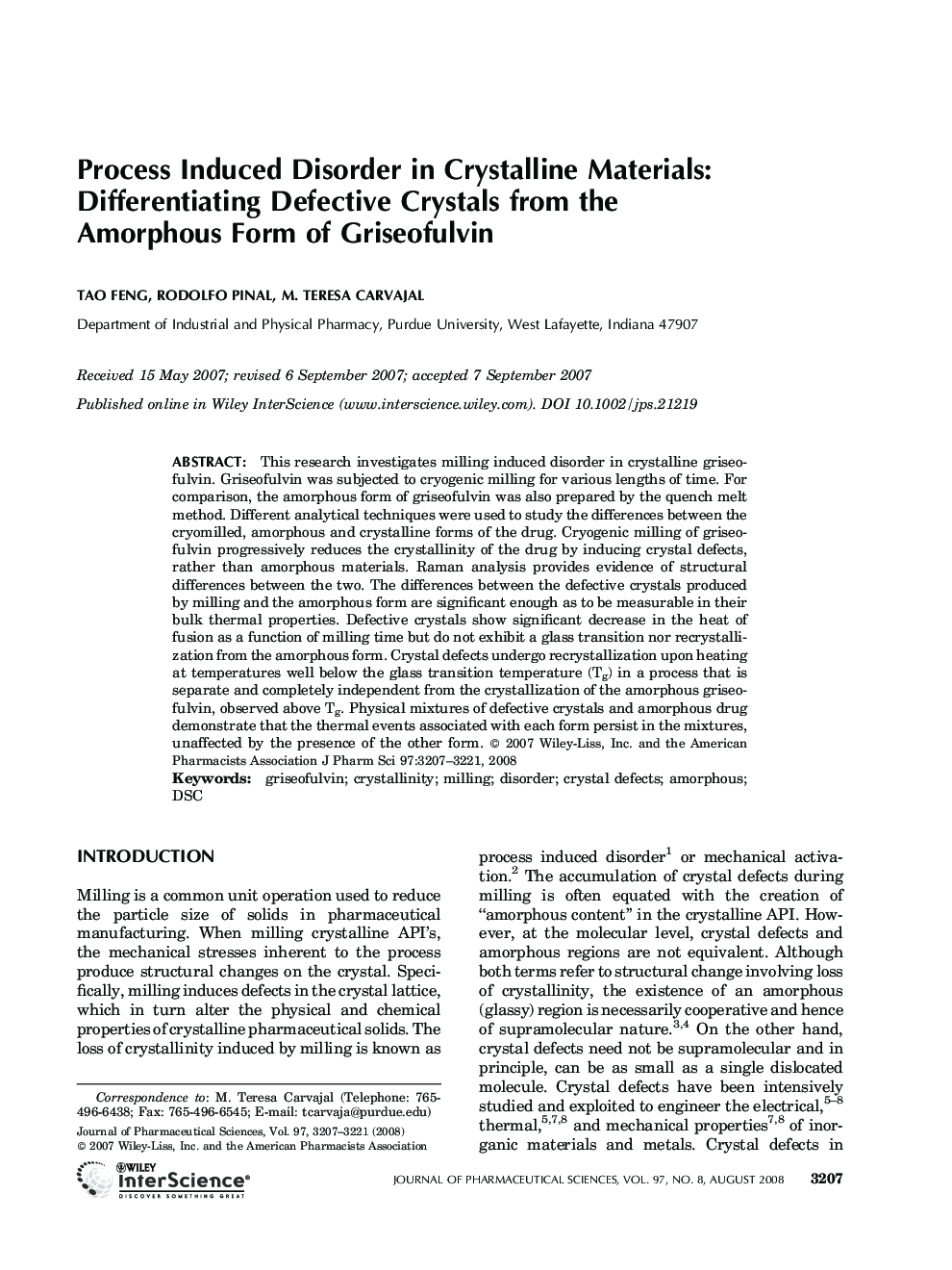| Article ID | Journal | Published Year | Pages | File Type |
|---|---|---|---|---|
| 2487358 | Journal of Pharmaceutical Sciences | 2008 | 15 Pages |
Abstract
This research investigates milling induced disorder in crystalline griseofulvin. Griseofulvin was subjected to cryogenic milling for various lengths of time. For comparison, the amorphous form of griseofulvin was also prepared by the quench melt method. Different analytical techniques were used to study the differences between the cryomilled, amorphous and crystalline forms of the drug. Cryogenic milling of griseofulvin progressively reduces the crystallinity of the drug by inducing crystal defects, rather than amorphous materials. Raman analysis provides evidence of structural differences between the two. The differences between the defective crystals produced by milling and the amorphous form are significant enough as to be measurable in their bulk thermal properties. Defective crystals show significant decrease in the heat of fusion as a function of milling time but do not exhibit a glass transition nor recrystallization from the amorphous form. Crystal defects undergo recrystallization upon heating at temperatures well below the glass transition temperature (Tg) in a process that is separate and completely independent from the crystallization of the amorphous griseofulvin, observed above Tg. Physical mixtures of defective crystals and amorphous drug demonstrate that the thermal events associated with each form persist in the mixtures, unaffected by the presence of the other form.
Related Topics
Health Sciences
Pharmacology, Toxicology and Pharmaceutical Science
Drug Discovery
Authors
Tao Feng, Rodolfo Pinal, M.Teresa Carvajal,
